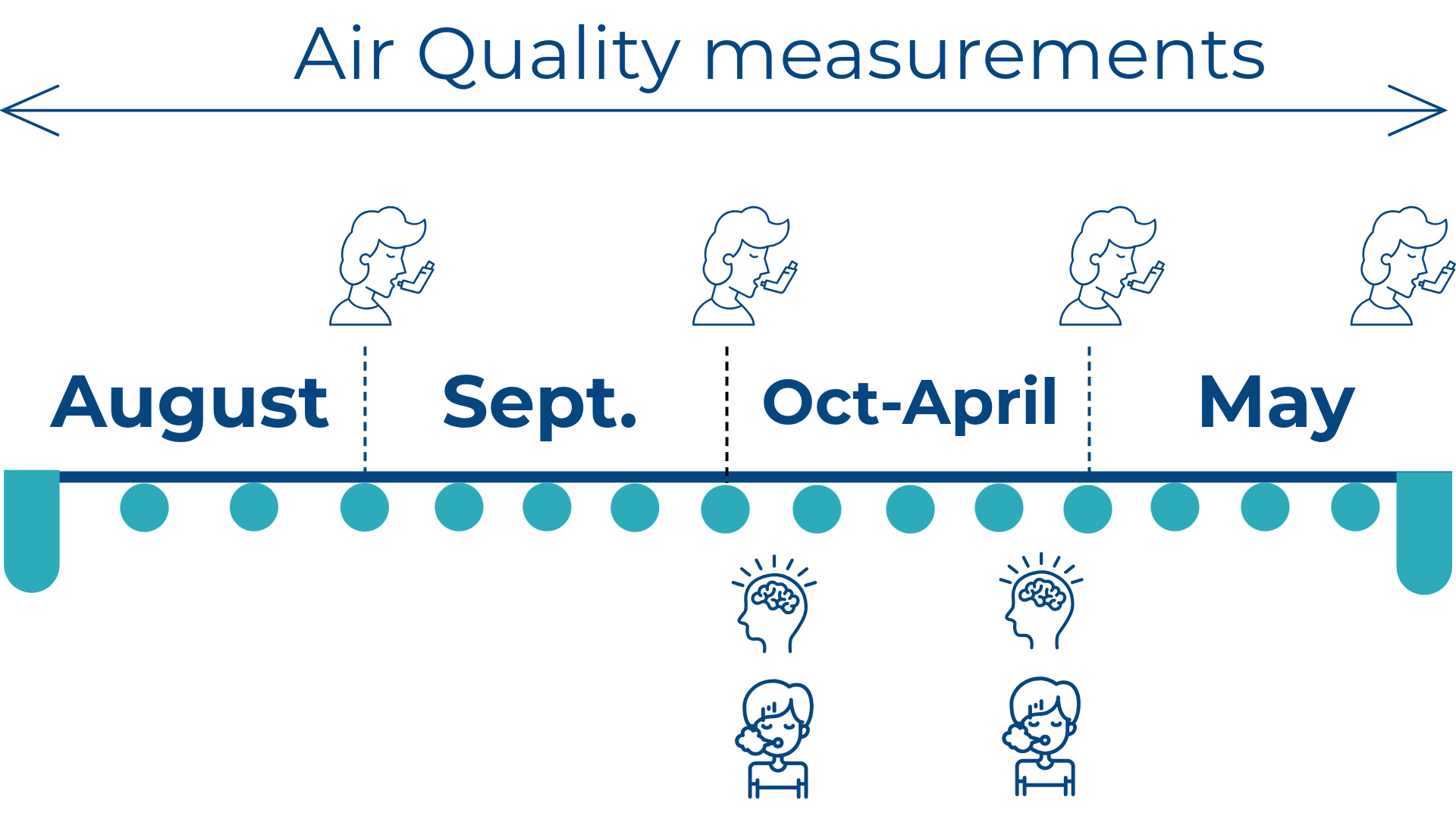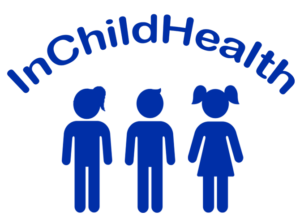Epidemiological study in Helsinki
School environment and health -study
The University of Oulu and Aalto University are conducting the School environment and health -study in Helsinki city comprehensive schools during the school year 2024-2025. The purpose of the study is to investigate how the indoor air quality of school buildings impacts respiratory tract infections, symptoms, and asthma control among children. In addition, the study will investigate how indoor air quality affects children’s learning, memory and ability to focus.
Children spend a large amount of time indoors, which is why indoor air quality plays an important role in health. It is especially important for children, as their body functions are still developing.
School children get several respiratory infections every year. Infections can last from days to weeks, and result in absences from school. The indoor air quality of schools may impact the spread of respiratory tract infections between students. Children who suffer from asthma are especially sensitive to the effects of poor indoor air quality.
In addition, there is research suggesting that poor indoor air quality may affect children’s memory and their ability to focus and learn.
The purpose of this study is to find and present practical solutions, with which learning environments can be improved in a way that reduces the spread of infections and improves comfort and learning ability at school.
What are we researching?
Children’s health and well-being
- Respiratory infections, such as the common cold (flu), ear infections, pharyngitis, bronchitis, pneumonia, influenza and Covid-19.
- Respiratory, eye, skin, and general symptoms (e.g. headache, fatigue, eczema)
- Asthma control, meaning asthma symptoms
- Learning and memory (cognitive features)
School indoor air and surrounding environment
- School facilities, materials, building structures and constructional engineering
- Air exchange rate, temperature, and relative humidity (physical features)
- Gaseous and particular compounds, such as VOC, carbon dioxide (CO2), carbon monoxide (CO), nitrogen dioxide (NO2) and particulate matter (PM)
- Biological factors such as microbes (e.g. mold and bacteria)
- Outdoor air pollution, noise and the school’s location in relation to roads and industry
Who are taking part in the study and when does the study take place?
The study will invite approximately 4000 1st-6th grade students from ten Helsinki comprehensive schools. The study will take place during the school year 2024-2025.
Schools taking part in the study:
- Arabia comprehensive school
- Paloheinä elementary school
- Kankarepuisto comprehensive school (Jakomäen sydän)
- Roihuvuori elementary school
- Aurinkolahti comprehensive school
- Kulosaari elementary school (Kulosaaren korttelitalo)
- Haaga comprehensive school
- Ressu comprehensive school
- Snellman elementary school
- Ruoholahti elementary school
How do we research?
The study surveys are filled in electronically on a computer or mobile device using the REDCap app. All responses are saved into the secure University of Oulu server. Figure 1 shows the timeline of the study.
Baseline survey (filled by the guardian): Questionnaires on the child’s background information, living environment, lifestyle, diet, and the effectiveness of the study (citizen science).
Weekly survey (filled by the guardian): Information on the child’s respiratory tract infections and symptoms will be asked on a weekly basis.
Viral test: Participants of the study will have the opportunity to take an at-home nasal swab when the child has a respiratory infection. The swab is used to diagnose the virus causing the infection.
Children’s cognitive tests (memory and learning games) in some of the classes: The memory and learning games are completed on a tablet during school hours together with other children taking part in the study.
Asthma test: Once a month, children with asthma will be surveyed on their asthma control.
PEF measurements: Children with asthma will be asked to participate in a PEF measurement period, during which peak expiratory flow will be measured at home every morning and evening. A portion of participants with asthma will also be given the opportunity to use a wrist/armband (CSEM Delta), which measures heart rate, oxygen levels and other physiological signals.
Health registry information: Information on respiratory tract infections and allergic diseases diagnosed in health care will be retrieved from the health registry maintained by the Finnish Institute for Health and Welfare (THL).
School environment: Measurement devices measuring indoor air quality will be placed in learning spaces. The devices do not affect school performance, well-being or safety at school.
In addition, the air quality of the home environment will be investigated by combining home address coordinates with weather databases of the Finnish Meteorological Institute.
Personal air pollution exposure: Voluntary participation in a study, where the child carries a device measuring the air quality of their living environment.

Figure 1. Timeline from the beginning (August 2024) to the end (May 2025) of the study.

Why should I participate?
Schools and parents will receive current information on the indoor air quality of their own school, and how it may affect children’s illness, school absences, learning and overall well-being. The study results will be used in measures aimed at improving the indoor air quality of schools and children’s well-being.
Finnkino cinema tickets and Linnanmäki wristbands will be raffles among those actively participating throughout the study.
Data security of the study
National and General European Union data protection regulation regarding research and personal information (GDPR) will be used in data processing and storage. The researchers and other research staff have committed to adhering to good scientific practice and ethical guidelines of research.
The child’s personal information will be processed for scientific research purposes. Collected information will be processed in a coded format, from which individual participants cannot be identified. Data processing and storage happens on the secure server of the University of Oulu.
Guardians invited to participate in the study will receive additional information on the processing of personal information and the rights of the participant with the study invitation. You can also read more about data security in relation to research from the University of Oulu quality manual and from the website of the Office of the Data Protection Ombudsman.
The regional medical research ethics committee of the North Ostrobothnia welfare region has given the research plan a favorable statement. The Helsinki city Education Division has granted the study a research permission (HEL 2023-016205).
Who is conducting the study?

Indoor Air Quality study
Department of Civil Engineering, Aalto University:
InChildHealth Project leader Professor Heidi Salonen heidi.salonen@aalto.fi

Health impact study
Center for Environmental and Respiratory Health Research (CERH), Research Unit of Population Health, University of Oulu:
Research leader, professor Jouni Jaakkola jouni.jaakkola@oulu.fi
Leading researcher, docent Aino Rantala aino-kaisa.rantala@oulu.fi
Docent Timo Hugg timo.hugg@oulu.fi
Post-doctoral researcher Inês Paciência ines.paciencia@oulu.fi
Welcome to join the study!
If you have any questions regarding the study, you can contact us at InChildHealth_Helsinki@oulu.fi or directly to the researchers.
